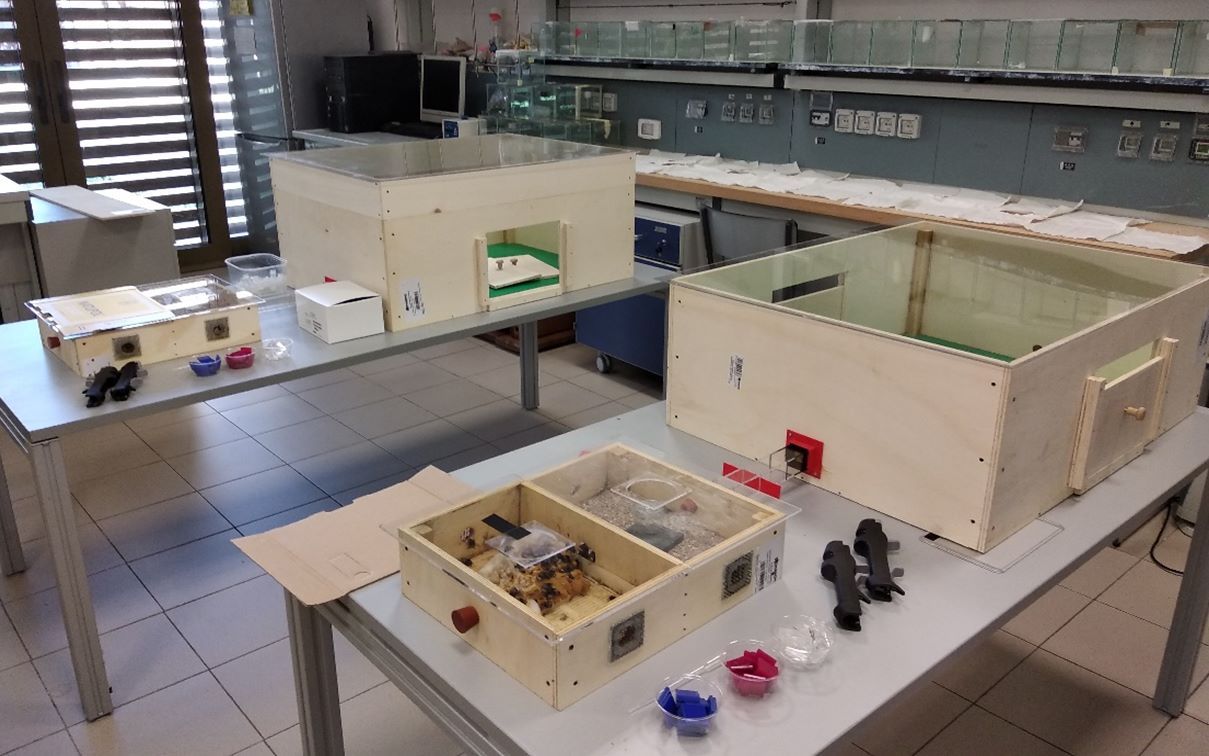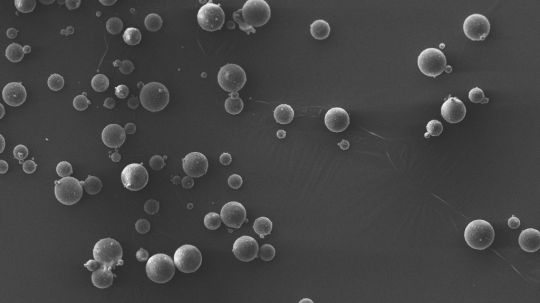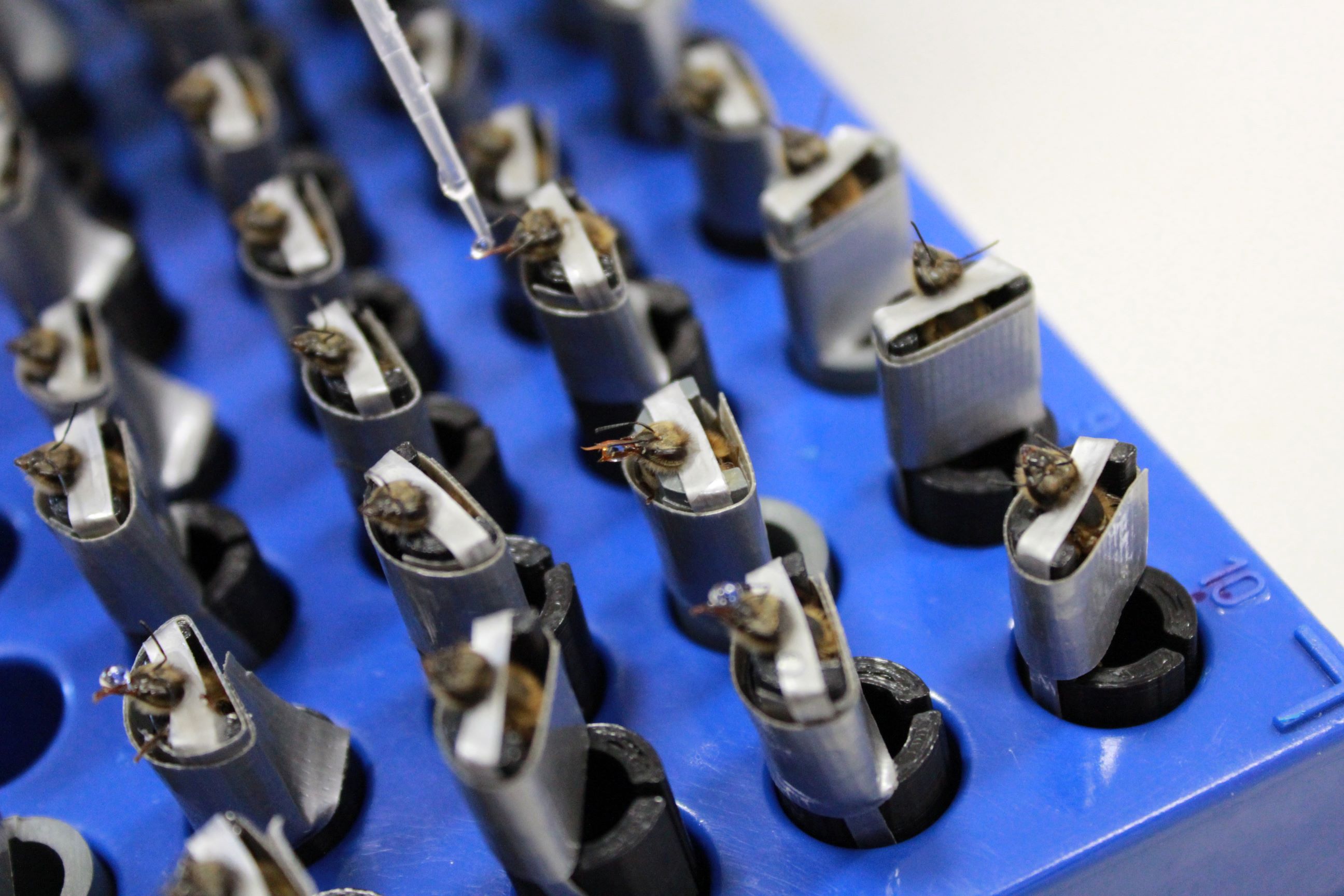- Background
In recent years there has been a significant decline in pollinators, particularly bees, both wild and farmed. This decline is not good news, as these insects play a crucial role in our environment and economy. Scientists have linked the decline to a number of factors, including climate change, habitat destruction, intensive farming practices, pollution and increased exposure to diseases and parasites. Among these, synthetic pesticides and chemicals used in agriculture pose a major threat to bees. However, another worrying pollutant that has been somewhat overlooked is microplastics (MPs). Microplastics are tiny plastic particles, less than 5mm in size, that are found almost everywhere - in the air, soil, water and even in remote areas untouched by humans. These particles, which include types such as polyester, polystyrene, polyethylene, polypropylene and polyvinyl chloride, persist in the environment for long periods of time. They have caught the attention of scientists because of potential toxicity concerns due to the release of various additives. While most studies on microplastics have focused on their effects in aquatic environments, research on their effects in terrestrial environments is limited. Moreover, studies in aquatic systems have shown that exposure to microplastics can harm organisms in a variety of ways, causing stress, immune problems, reduced feeding, and reproductive problems. For bees, both managed and wild honey bees are directly exposed to microplastics while foraging. For example, honey bees travel several kilometres from their hives to collect nectar and pollen, coming into contact with microplastics in the air, soil and water sources. Considering the alarming decline of bee populations, it's crucial to thoroughly examine how microplastics might be negatively affecting managed honey bees and other wild pollinators.


Bumble bee flight arena (D. Baracchi) Harnessed bees (D. Baracchi).
- Aims and methodology
The overall aim of the project is to understand how different types of microplastics (MPs) affect the cognitive abilities, health of individual bees and the overall fitness of insect colonies. In particular, the project focused on two paradigmatic species of wild and managed pollinators of great economic importance (the primitively eusocial Bombus terrestris and the highly eusocial Apis mellifera). Both species offer the enormous advantage of being model systems for understanding learning and memory, cognition, and health in insects. Our research took a multidisciplinary approach, integrating different disciplines such as chemistry, microbiology, behavioural science, cognitive studies and advanced 3D imaging techniques. This comprehensive methodology allowed us to conduct chemical, microbial, behavioural and cognitive experiments to gain a holistic understanding of the impact of microplastics on these important insect species.
- Outcomes
The project investigated the effects of several microplastic polymers on the health, cognition, and colony dynamics of A. mellifera) and B. terrestris. The results include several studies, some published, others in preparation or ongoing, focusing on different aspects of MP exposure.
- Acute and chronic ingestion of polyethylene (PE) microplastics has mild effects on honey bee health and cognition. The study investigated the effects of PE microplastics on honeybees. It found that higher concentrations of PE led to increased bee mortality, changes in feeding behaviour and changes in the consistency of the sucrose response. However, the bees' learning and memory abilities were not significantly affected. This suggests that while there are observable effects of PE ingestion, caution is needed when assessing potential harm from environmental levels of PE particles.
- Microplastics reach the brain and affect honey bee cognition. The study investigated how polystyrene (PS) and plexiglass (PMMA) affect the cognitive and behavioural performance of honey bees. Bees exposed to these microplastics at environmentally relevant concentrations showed negative effects on sucrose responsiveness, learning and memory. In addition, the research showed that fluorescent microplastics of 1-5 μm) could enter the bee's brain by crossing the blood-brain barrier, raising concerns about potential damage to the central nervous system.
- Exploring the synergistic and sublethal effects of microplastics on the wild pollinator Bombus terrestris. In addition to honey bees, the research extended its focus to bumble bees. It found that exposure to polystyrene (PS), plexiglass (PMMA) and a combination of the two polymers altered the lifespan of bumblebees, affected their sucrose responsiveness and appetitive olfactory learning, and led to impaired learning abilities. Surprisingly, a mixture of specific microplastics had distinct effects, highlighting the importance of studying interaction effects in ecotoxicological research.
- Investigating the impact of microplastics on male quality in Bombus terrestris. As part of our ongoing research, we are investigating how microplastics affect various traits in male bumblebees, including sperm quality, vitality and the functionality of male accessory glands, which are essential for mating with queens. Our preliminary findings suggest potential implications for colony fitness.
- Conclusion
Overall, the findings of our project shed light on the complex and multifaceted ways in which microplastics can affect bee health, cognition, colony reproductive success, and highlight the need for further research and environmental awareness regarding the impact of microplastics on important wild and managed pollinators.
- The role of the Eva Crane Trust
The support provided by the Eva Crane Trust was crucial to the progress of our two-year research project, without which our goals would have been unachievable. In particular their funding was essential in enabling us to investigate the effects of different types of microplastics on cognitive abilities, individual bee health and overall colony dynamics.
This support has been instrumental in increasing the scientific community's understanding of the critical issue of microplastics on pollinator health. It has also enhanced the reputation of both the BCE laboratory and the students involved in the project. As well as facilitating research, the funding has highlighted the importance of studying and mitigating the impact of microplastics on key pollinators, shedding light on this pressing environmental issue.
Prof. David Baracchi, University of Florence, Italy.
Research team (CBE Lab): https://davidbaracchi.wixsite.com/beelab
Ref.: ECTA_20210910
Completed: 2024



